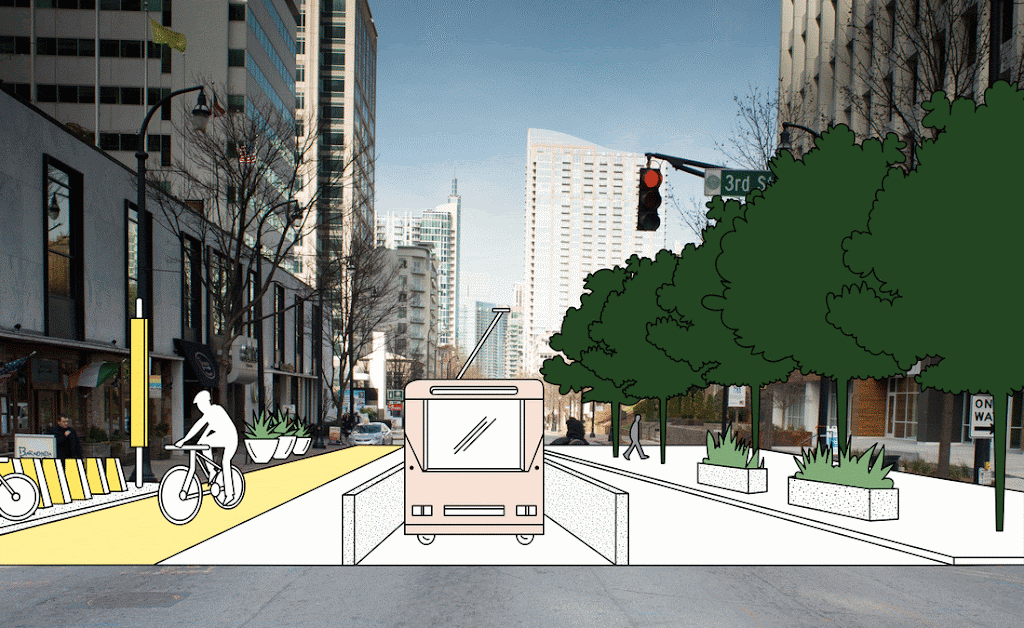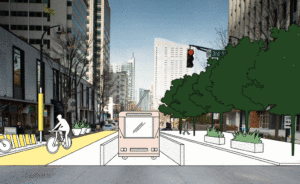(Note: The changes that we speak of in this article is expected to happen in the course of the next 10 years!)
Workplace of the future (a part of which is already visible) is no longer going to be a ‘physical space‘ but a ‘network‘ that enables the staff to connect with the resources needed to carry out the affairs of the business, in a seamless and secure manner. Even before the heat from the Pandemic started burning us out, the bottlenecks that excessively centralised and vehemently urbanised operations force upon the ecological balance of the cities had begun to appear counter-productive. The health risk from the wretched virus has in a way fast-tracked much-needed change in the organisation of the modern economic hubs.
- The commute for urban workers is getting 10% longer every year, 2/3rd of the respondents said that it was the worst part of their workday.
- Cost of living in cities was thinning saving capabilities of the working middle class, leaving them in a vulnerable position, with less than 30% having enough in the bank to run domestic affairs for a quarter without fresh influx.
- 70% of all things that cause Global warming originated from the cities.
Modern cities, as we know them, were shaped by the Industrial Revolution; locations near ports became important distribution centres of goods, as a result of which accumulation of both people and properties followed. Back in the day, being physically present was the only way to make commerce happen and thus congestion in metropolitan centres was both natural and a conceded consequence. Thankfully, the advancements made in modern times have liberated us from those limitations; ‘in-person supervision’ is not the only tool available to humankind, today.
Will anthropologists find considering the ‘invention of the Internet’ comparable to the ‘discovery of fire’, outrageous? They may and I won’t dislike them for it nor does my assertion push their opinion any further from the fact than, it is. After all, they have studied life before ‘fire’ with whatever pieces of evidence that are still present, their shelves are full of books uncovering life after fire. The vantage point from which my contemporaries and I see the world, we find the impact of the world wide web just as staggering. The conundrum of the internet is fascinating though, it brings people together, video call with someone sitting on the other side of the planet is an excellent example of it and it also tears people apart, the unsavoury impact of social media on human relationship and society is a piece of fine evidence. No tool, however, is inherently good or bad. It is the intention of the user that makes the outcome come out as noble or otherwise. For instance, gun on its own doesn’t kill anyone; those who point and pull the trigger do.
The Internet has democratised information, removed many a barrier and brought civilization to the advantage of functioning without physical contact with comparable and in many cases even better outcomes. Imagining a world tottering under a Pandemic without the internet would really be an exercise of picturing the devil. When the virus locked us all up in the confines of our homes, we turned to this very tool in our arsenal to accomplish everything that needed to be done: from schools to senates; everything shifted its operation ‘online’ (entirely in some sections and in parts in others). A world without the internet will impact more than just the running of business today, as it is now the lifeblood of human existence.
Ubiquitous ‘Work from home’ has changed more than our relationship with work. It is substantively altering run of the economy, urban planning, ecological balance and human mobility (both migration to and reverse migration from centres). A little over a year has already been lost to the virus, thankfully, we have viable vaccines now, but inoculation of 7.5 billion people spread across an entire planet is not an easy task. The most aggressive estimates suggest that it is not going to happen in less than 5 years, at any rate. The window of struggle is so long that that measures implemented as temporary modifications will become a part of our lives by the time we see the menace off, following the sheer rule of practice.
Cities have undeniably suffered more than the rural areas from the mega virus breakout. The volume of economic activities that are conducted in these urban centre cause interest groups to invest in infrastructure to sustain the commerce: high delivery attracts higher resources and the accumulation keeps getting thicker. Heightened economic activities attract talent and thus workforce migrations happen. Cities provide better services to its dwellers, from education to health and sanitation – everything is a bit better, a bit nicer; and thus becomes a magnet to those who seek better standards of living. A virus that found its carrier in humans hit these metropolitan centres hard, congested spaces and high population density provided the perfect breeding ground for the virus. Growing scare and overflowing hospitals drew people in masses to leave for a safer place. Different segment of the population had different reasons for moving out of the city. Here a few.
- Migrant labourers: We saw millions track treacherous roads on foot, ranging anywhere between 100 and 1000 km, back home as the imposition of lockdown cast shadow of doubt over their paycheque.
- White-collar workers: Those who could work from home, preferred to be at their native places in Tier 2, 3 cities and villages with their families, instead of continuing at more expensive rented places in the city of their work. Traffic woes and other difficulties that came out of congestion did little to dissuade people from abandoning the towns.
- Urban Native Dwellers: With schools getting digital too, parents had little trouble in shifting bases. They welcomed the once in a lifetime opportunity to live in a greener, more affordable area, devoid of every suffocation that large city imposed upon them. All other compromises that were to be made in absence of modern amenities were happily embraced as the price of convenience and quiet of their new base location.
- Business: Leaders began to see how unimportant and wasteful are the office spaces of the city. They understood that they do not need to be present in the plush corporate parks anymore. The possibility of making substantial cost savings, by allowing workers to work in a distributed model, was greeted with an unabashed cheer.
Where do these changes leave our beloved cities? Will they siege to exist? The answer to that question is not a simple one. This proposition has many layers. A city is built not in a day, it comes about brick by brick, with centuries of investment, careful planning and infrastructure augmentation; not all facilities of which are portable. For instance, a super speciality hospital can’t be dismantled and thrown into pieces in smaller cities, at the drop of a hat. Government establishment, the core of it, are all in the cities, which means from litigation to other needs which can only be fulfilled by the state will be required to be performed in the city. What then happens to the future of the cities? To understand it, let us imagine that the entire population of all cities is that of 100 people. Let us assume that 30% can ride on the Internet (Cat 1) to get their business rolling from outside the cities and therefore will easily move. Roughly another 30% (Cat 2) of the population survives from the services that it provides to Cat 1. This shift will cause upward mobility for small % of people from Cat 2, as a reduction in manpower will increase the cost of manpower. What do the rest do? How will they sustain with their entire market migrating outside the bound of the cities? As a result, another about 20% will find the cities unviable.
With nearly 50% of the city gone, its ability to attract investment will also go down, one would assume in a larger proportion than the fall in the demand. The thing to note here is that disintegration is not going to be uniform, in the sense that the entire population will not move from city A to village B. We would see smaller clusters sprinkled across the country. These spread out earners will begin spending in their new localities and with that demand and supply equilibrium of the new places will get impacted, tipped for growth. Mini-cities will start coming up in suburban and rural parts of the country. Open spaces in the city, the spaces vacated by 50% of its erstwhile dwellers will slowly began to repair itself, healing of sorts with begin.
Studies show that 10% to 15% shift in demand in the real estate market is enough to cause revolutionary change, and in this case, we are speaking about a minimum of 30% of movement from city centres to the suburban and the rural areas; major changes are bound to come.
Some of which could be:
- Polly Centric cities
- 15 minutes commute cities
- Distributed city models.
- The rise in the demand for co-working spaces as mini-city begins to rise. Corporates will much prefer disintegrating large offices in favour of small co-working spaces in the suburban areas.
Such a remarkable change will also have an impact on the social set up and living arrangement of those who would participate in this change. Cosmopolitan mini-city will become a thing.
We should talk about two of the important phenomenons.
- Lack of separation between work and life: Commute works as an active separation between work and home. For many, it provides for the much needed pondering time. A healing chamber of sorts, a time in which working population, adjusts the disorientations cause both at work and at home.
- Social and emotional separation: There is a range of emotion that we face at work, different from the offering of the home, therefore, response systems have also been developed in us differently. For instance, an employee hearing the music in front of his co-workers is not the same as he getting to face an uncomfortable situation with his family in the company. People essentially live different lives between their work and family – a merger of the two could cause an emotional imbalance in many and mental disbalance in some cases.
‘Work from home’ has taken that cushion away from people, now, there is no way for them to physically separate themselves from what is being said or done by their counterparts at work and life partners at home. But all is not gloomy and sad, because this system of survival has evolved through years and generations of practise, trial and error, hopefully soon, the human race will master the art of thriving in this new set up too. If not in this generation, at least the one after it will come out to be better prepared and perhaps by then complimenting infrastructure (both soft and hard), policies (both public and private) and procedures and ways of life alongside the technology would have gotten much better.
The future is certain to be different from our present and I am confident it will be better too.
With that, I end this.. Bye-bye!

